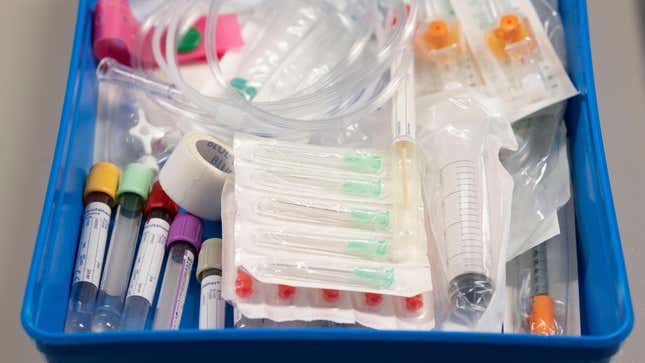
A woman’s attempt to augment her buttocks led to an unusually delayed and life-threatening infection that started to rot away her skin, doctors in Ireland say. In a new report, they describe how the 29-year-old contracted a rare infection in the same part of her buttocks where she had gotten dermal fillers injected more than a year earlier. Though she developed sepsis and endured 18 days in the hospital, the woman was able to fully recover thanks to antibiotic therapy.
Butt augmentations have become some of the fastest growing cosmetic procedures. In 2019, more than 30,000 butt-related procedures were performed in the U.S., according to the American Society of Plastic Surgeons. (Like so many things, though, the covid-19 pandemic greatly reduced people’s appetite for plastic surgery last year.)
There are different types of augmentation, but they all involve using some material to create a rounder and fuller-looking butt. People can get butt implants, similar to the silicone implants people get for their breasts. Surgeons can also use liposuction to take fat from elsewhere in the body and then surgically graft it in the butt, which is also known as a Brazilian butt lift. The less invasive and cheaper version of the latter procedure injects a synthetic filler instead of fat into the butt. It’s this last kind of cosmetic work that ended up causing trouble for the patient detailed in this new report, which will be presented this week at the annual European Congress of Clinical Microbiology & Infectious Diseases.
According to the report, the woman visited the emergency room of St James Hospital in Dublin, Ireland with symptoms of nausea and an abscess—a swollen, often discolored pocket of pus—near the site where the fillers were injected 14 months prior. Doctors quickly determined that she had developed cellulitis, a common but potentially very serious type of skin infection that can spread elsewhere in the body if not treated fast enough.
The woman was soon admitted to the hospital and given antibiotics, while the abscess was drained the next day. Five days later, the abscess was drained again, and doctors removed both the fillers she had gotten along with 500 milliliters’ worth of necrotic (dead) tissue. By then, it was obvious that the infection had spread to her bloodstream and that she had sepsis, a life-threatening immune response caused by widespread infection. The woman was then started on intravenous antibiotics.
Fortunately, within a day of this added treatment, her condition greatly improved. And by day 18, she was able to be discharged, though she would need to keep taking antibiotics for the next six weeks. Since then, her initial wound has fully healed and the woman is doing just fine, the doctors say.
According to the doctors, reported complications after getting dermal fillers are rare, but they do seem to be going up as these procedures become more popular. Even rarer is someone who gets an infection long after their filler procedure, though this incident isn’t the record-setter, since the authors cite several filler-related cases where infections showed up several years later. In this case, it’s not confirmed why it took so long for the woman’s symptoms to appear, but they do have some educated guesses.
There were two suspected bacterial culprits found in her wound—Staphylococcus lugdunensis and Pseudomonas orzihabitans. The former is a common source of skin and soft tissue infection, but P. orzihabitans has only rarely been implicated in causing illness. It’s possible the surface of the filler provided the right opportunity for these bacteria to form into a biofilm—a gooey and hardy collection of bacteria that are more capable of causing infections. The woman’s damaged tissue around the filler injection also seemed to have tiny pockets of air, which may have fueled other infections caused by gas-churning microorganisms that added to her misery. (The actual material used as filler isn’t known, but the authors suspect it was hyaluronic acid, a common ingredient in skin care products as well as a natural component of the skin)
Though this woman’s case was treatable, the doctors say it should be a cautionary tale for people exploring similar procedures.
“Pseudomonas oryzihabitans is an unusual cause of human infection, but in recent years it has become increasingly linked with hospital-acquired and opportunistic infections,” said lead author Siobhan Quirke, an infectious disease specialist at St James, in a statement from the European Society of Clinical Microbiology and Infectious Diseases. ”Thankfully, treatment is not difficult due to the low level of resistance to common antibiotics. Nevertheless, this case serves as a reminder that it’s important to choose a reputable cosmetic surgeon.”
Fillers aren’t the only relatively risky cosmetic procedure involving the derriere. In 2018, the American Society of Plastic Surgeons warned that Brazilian butt lifts have had a far higher mortality rate in recent years than any other cosmetic surgery around, with death rates high as one in 3,000 patients. At the time, the organization announced a task force to study the issue, but some people have already called for the procedure to be banned entirely.